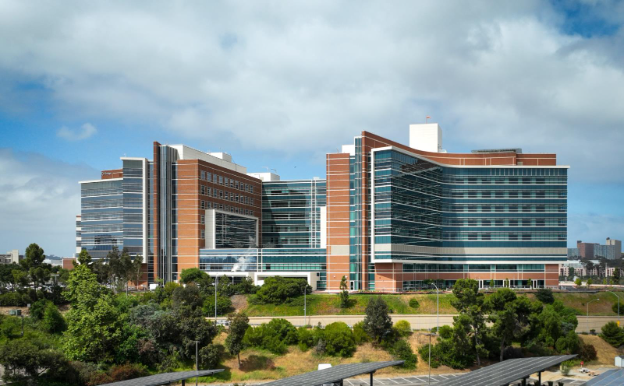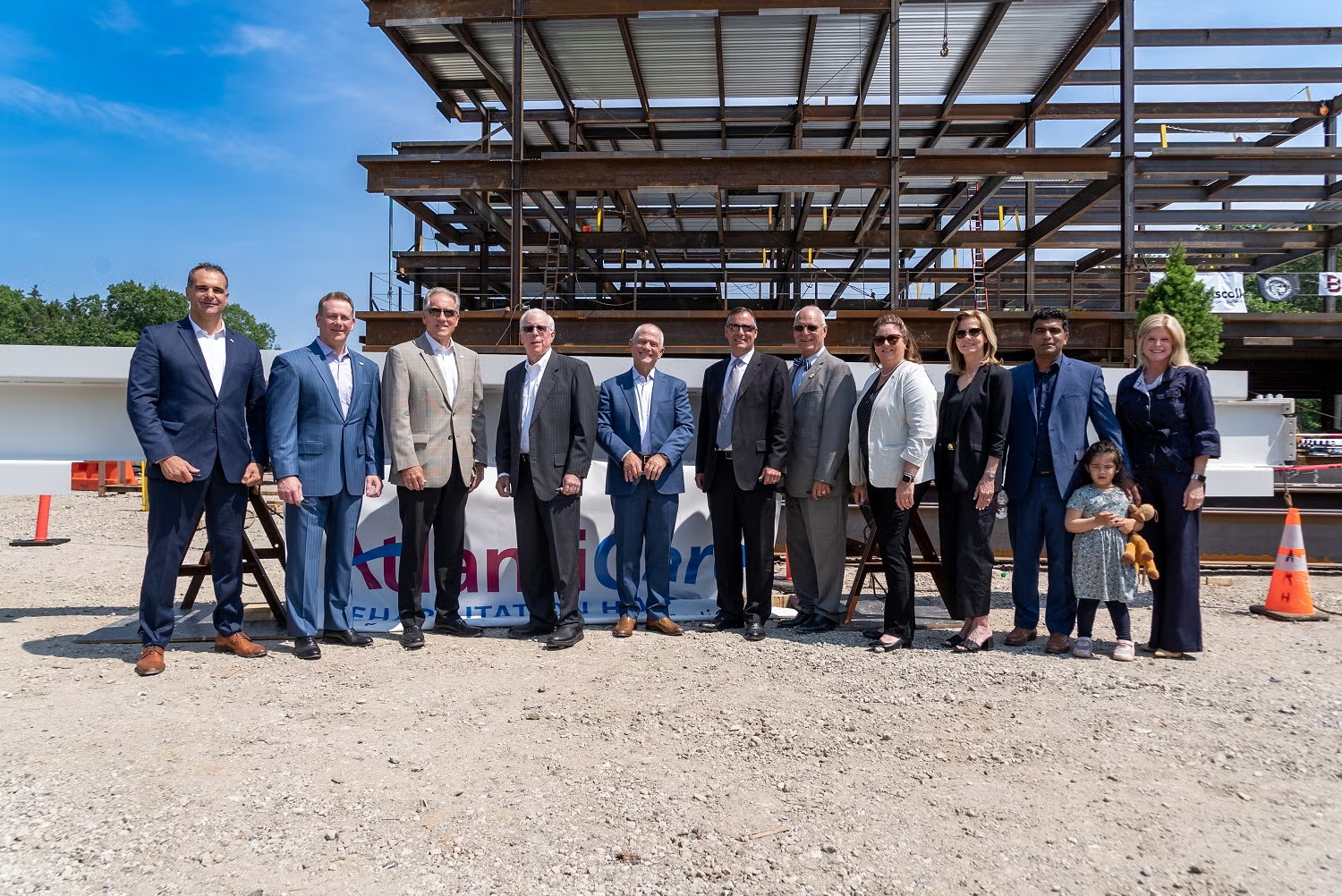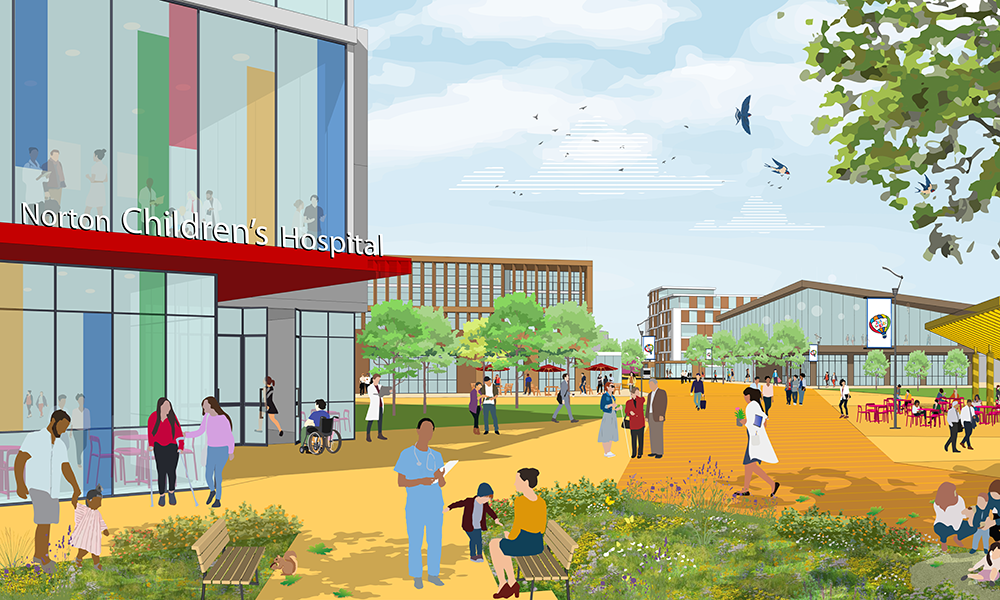By Randy Thomas
For some, the image of a sterile, uncomfortable environment in healthcare facilities still exists – caused by an experience from a bygone era when hospitals were utilitarian in nature.
As we know, the modern healthcare facility has changed drastically. One of the major changes facilitating the shift to a more comfortable, welcoming, and healing environment is the literal light we cast our spaces in.
Today we see advanced lighting design strategies deployed to actively improve patient and visitor outcomes and comfort and staff productivity. Task lighting is integrated in a way which makes staff perform more effectively and efficiently. Lighting optimization is now considered throughout a patient experience.
The research backs the new approach. According to the Center for Health Design, the correct levels and applications of light help reduce depression, cut agitation, ease pain, and even reduce the length of hospital stays for patients. The research also finds that lighting has an impact in improving the absorption of vitamin D and treating jaundice in newborns.
One new – yet major – step in healthcare lighting comes from adding human-centric lighting (HCL) to a facility’s lighting strategies. While there may be varying definitions, at Legrand we define human-centric lighting as lighting that focuses on the health and wellbeing of people by balancing the visual, emotional, and biological benefits of light. The approach includes the use of modern high-quality tunable LED lighting and controls. In addition to electric lighting solutions, HCL offerings can also include shade and skylight control to easily take advantage of natural daylight and manage in conjunction with electric light.
Applications for HCL are diverse. An example of this is seen in the addition of tunable white lighting in dermatology exam rooms that simulate daylight to help doctors examine skin complexions in various and different lighting conditions. Another application of tunable white is in Infusion Centers as softer lighting can help patients relax during chemotherapy treatment. Operating rooms are even looking at increased kelvin temperatures for improving visibility.
The reality is that tunable white lighting is a growing topic of conversation with growing use cases within healthcare lighting projects.
Wattstopper Digital Lighting Management (DLM) systems with advanced tunable light engines and controls have become integral in the deployment of these strategies. DLM is an intelligent, distributed control system with room controllers, occupancy sensors, switches, daylighting sensors, plug load controls, lighting control panels, interfaces, and accessories. The system provides healthcare facilities convenient, energy-saving control of lighting and plug loads, intuitive controls, and easy code compliance. It easily meets requirements like daylight harvesting and time-of-day controls. The combination of leading light engines with DLM control brings a new level of simplicity and speed to tunable lighting projects throughout the design, installation, and building maintenance phases.
Simply put, the days cold, stark, and sterile hospitals are finished – replaced by advanced lighting technologies that are not just making facilities look better but improving healing outcomes.
Patient Control and Comfort
HCL systems can match or emulate natural circadian rhythms by transitioning through warm and cool environments. These are also prescribed light levels that nurses and doctors can use during rounds and is very prevalent in in-patient rooms. Being able to tune lighting promotes a healthy wake and sleep cycle.
Patient Room HCL, Moving Forward
Advanced lighting control technology will reside at the fixture level. HCL features will be fixture-based with occupancy, motion, and temperature sensor capabilities integrated within the fixture.
This level of data and sensor integration and control not only extends to the lighting, but also other building systems from shading and climate to AV. Facilities are asking for these capabilities now.
With these features, more intuitive interfaces will come about so the patient doesn’t need sit and push buttons, perhaps simply gesture or speak to have the technology respond.
Through room profile advancements, we’ll get to a point where the room will know who is in the room and interact with doctors and staff based on time of day and other factors, but this is admittedly a further future capability. And with sensors and wearable technologies, there are almost limitless possibilities.
Balancing HCL and Cost Benefit
Healthcare facilities will see a cost benefit across different aspects of the facility with lighting controls, not just in energy savings. When we look at cost benefit we think about patient comfort and how that affects their stay and their healing process and if patients have a positive experience. Patients now have many options when it comes to choosing where they receive care, and the better care a healthcare facility can provide for a patient, the better.
If healthcare facilities think about scores, reimbursement, and in-patient quality of report, that is where the investment should be measured, not with the initial product investment. Shorter stays and higher discharged patient rates show the ROI and validate patient care.
Healthcare facilities are continually looking for ways to improve patient care and provide a space where patients, whether short or long term, feel comfortable. Healthcare facilities are often rated based on patient experience, patient discharge numbers and comfort in both patient and common areas. With the advancements in lighting and shading technology, healthcare facility managers can now turn to these areas to play an important role in the patient experience.
Randy Thomas is director of healthcare technologies, Legrand Building Control Systems.





